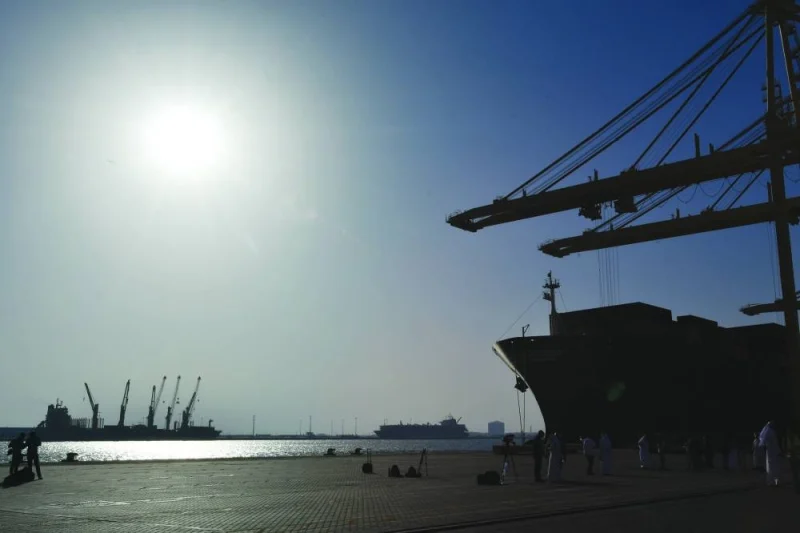Qatar's maritime sector witnessed brisk activities in the first quarter (Q1) of 2024 on an annualised basis on the back of higher container handling, vehicles (RORO), livestock and building materials through Hamad, Doha and Al Ruwais ports, according to the official estimates.
The positive momentum in the maritime sector is expected to continue in the light of 12-month optimistic outlook, especially for the country’s non-energy private sector, as indicated by the latest purchasing managers’ index of the Qatar Financial Centre.
The container handling through the three ports stood at 351,564 TEUs (twenty-foot equivalent units) in Q1-2024, surging 4.07% year-on-year. The containers handled was seen at the maximum in March at 136,851 TEUs.
In March this year, Hamad Port registered a new volume of container moves for one ship, the MSC CLORINDA, at the equivalent of 10,400 TEUs with the crane productivity at 39.1 gross moves per hour and the vessel productivity at 173 gross moves per hour.
Hamad Port – which features an intermodal transport network that offers direct and indirect shipping services to more than 100 destinations, facilitating efficient transportation and logistics services locally and abroad – saw a total of 136,501 TEUs in March 2024.
The container terminals have been designed to address the increasing trade volume, enhancing ease of doing business as well as supporting the achievement of economic diversification, which is one of the most important goals of the Qatar National Vision 2030.
Coinciding with Ramadan, the three ports were seen handling 221,125 livestock heads in January-March this year, showing a 46.26% surge year-on-year. The heaviest movement of livestock through three ports was reported in March at 118,569 units. Hamad Port alone handled 11,993 livestock heads in March 2024.
The building materials traffic through the three ports amounted to 142,886 tonnes in the review period, which shot up 6.13% on a yearly basis. In March, as much as 52,242 tonnes of building materials were handled by ports.
The three ports handled as many as 19,200 RORO in the first three months of 2024, registering a 4.46% increase on an annualised basis. In March this year, RORO movements was to the tune of 5,971 units, of which 5,936 was through Hamad Port.
The number of ships calling on Qatar's three ports stood at 647 in January-March 2024, which saw a 2.56% decline compared to the previous year period. March 2024 saw the maximum number of ships berthed at 232, of which 126 was at the Hamad Port.
The general cargo through three ports amounted to 367,350 tonnes in Q1-2024, plunging 40.52% on an annualised basis. Cargo handling in March this year stood at 139,097 tonnes.
Hamad Port – whose multi-use terminal is designed to serve the supply chains for the RORO, grains and livestock – was seen handling 123,134 freight tonnes (F/T) of breakbulk and 10,000 F/T of bulk in March this year.

The positive momentum in Qatar's maritime sector is expected to continue in the light of 12-month optimistic outlook, especially for the country’s non-energy private sector, as indicated by the latest purchasing managers’ index of the Qatar Financial Centre



